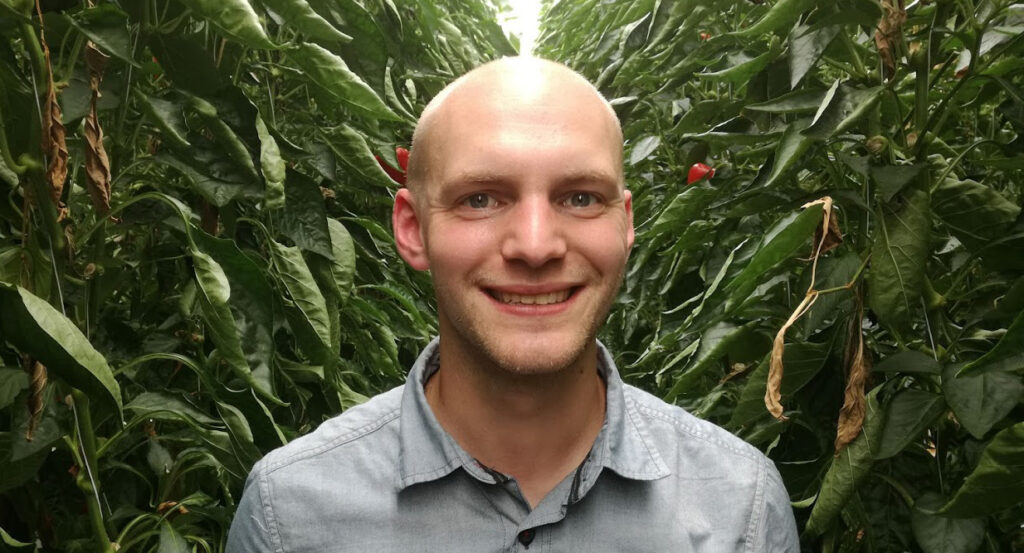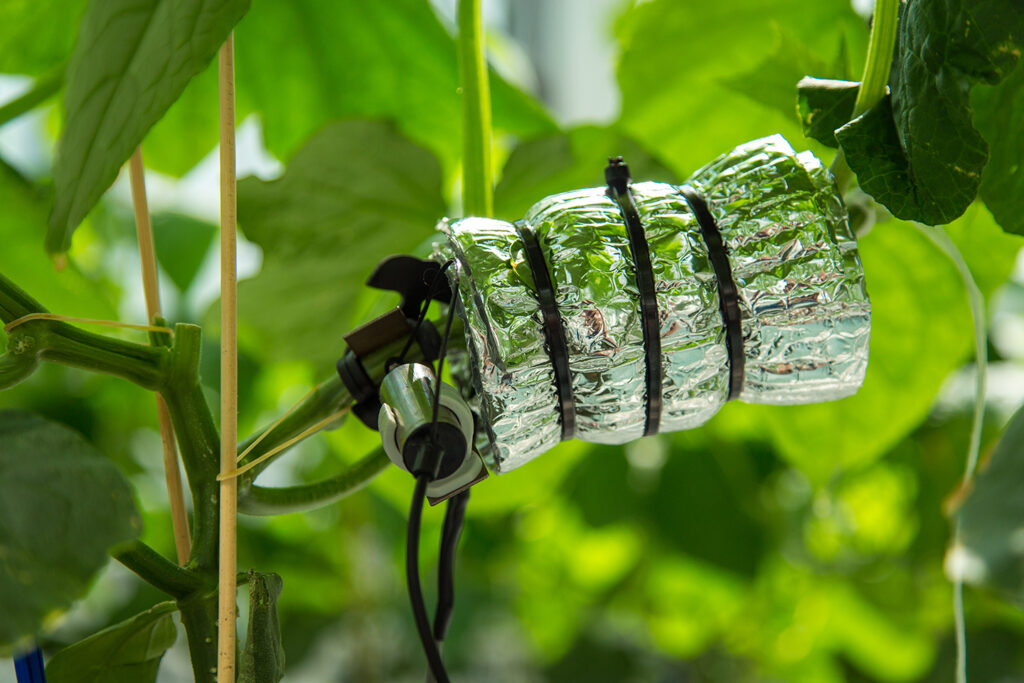
Blue Radix and 2Grow are working together in the TKI ‘Digital Green Fingers’ project. Alongside other renowned companies, they are evaluating a wide range of sensors for added value in optimizing the greenhouse climate with algorithms. The TKI project offers interesting insights, but there’s still more to investigate and test. That’s why the companies are preparing the next project together with a third partner. In this interview Maxime Dedecker, International Service Manager at 2Grow, discusses how he views autonomous growing. He also elaborates on the role of sensors in the greenhouse, and offers his vision for the coming years.
Sensor data interpretation
“The service team at 2Grow focuses on providing services to our clients in Belgium and abroad. Interpreting sensor data and taking follow-up action is the most important part of this,” says Maxime. “2Grow supplies sensors that can give growers accurate information about the sap flow and stem diameter. The data which our sensors generate helps in analyzing and assessing the status and development of the plant. Our focus in recent years has been on vegetable cultivation: tomatoes, cucumber, bell pepper and eggplant. But we’re also aware of the sensors’ value in vertical farming, ornamental cultivation (for example for chrysanthemum growers), and even in tree cultivation.”
More data, more insight, better results
“Our sensors open up a whole new domain for the grower. Instead of high over-measurements of the climate, we now generate valuable data at the plant level, which helps growers to refine the daily control further. The plant gets a direct measurement tool like a ‘Fitbit’ where we receive information directly from the plant. The emergence of data platforms means growers are gaining more insight into a wide range of data points, presented in a convenient way. This helps tremendously in interpreting data from a broader context. Cultivation becomes objectified. We can combine data quickly and easily, and can draw better conclusions. You can dig further and deeper into the data. What happened and why? This lets growers draw better conclusions for crop optimization.
“A good example of the advantage of the sensors based on direct plant feedback, is preventing crop losses by picking up on non-optimal water strategies very quickly. The grower himself is not always aware of this, but as a service team we look over the grower’s shoulder to keep an eye on everything. Preventing mistakes and correcting quickly where necessary delivers better production.”
Support needed
“Growers are used to working with charts and graphs. But growers are not data analysts,” Maxime continues. “Every week we look into the customer’s data and offer tips and suggestions through short WhatsApp messages. Every week we review the data from each of our customers’ sensors. We also organize a technical session every three months to discuss the data and conclusions. The tips are followed up well. We engage in a lot of contact, and this creates trust. But we don’t tell growers what to do. We do offer our opinions and answer the questions that growers have. For example, when nose rot and root problems occur: where does it come from? Often the answer is in the data.”
How do you view autonomous growing?
“One of the biggest challenges for 2Grow, but certainly for growers, who use sensors, is that it takes lots of time and attention to process and interpret data. It’s very labor-intensive. Even with well-organized dashboards, it’s quite a chore. It’s ideal if algorithms can process data from sensors directly at high frequency for analysis, interpretation, optimization and direct control of climate and irrigation. Autonomous growing is a development making this possible. If we succeed in including the direct plant feedback in that guidance, we’ll be taking a very big step forward together.
“And it’s not far off. If we can draw robust conclusions from the combinations of data points, then we can make adjustments quickly. A great example is the prediction of sap flow made by Blue Radix. That corresponds very closely to the actual sap flow. Here of course, predicting the amount of available light is crucial.”

What does the development of autonomous growing mean for your company?
“We’re going to focus increasingly on developing sensorics for plant status. We’ll establish links with production results where possible. If you can quantify the status of the plant now and what the development of the plant is or will be (vegetative versus generative), that also helps for harvest predictions in terms of quality and quantity.”
Maxime continues: “We’re proud of what our sensors are showing in the TKI project. Other sensors are often ambiguous and difficult to interpret. The educator often draws the same conclusions from the plant observation. It’s in line with what we expect based on the data from our sensors.”
What is your vision for the future of greenhouse horticulture?
“A lot is going to change in the short term. Through autonomous growing, through the development of sensors, through robotics. We see it emerging and also blossoming in more and more places. So many large greenhouses are being built. Automation is crucial to this. And there’s still so much room for improvement, in terms of the use of water, energy, nutrients and labor. So we expect greenhouses to look different. The question is whether the current construction of greenhouses will still fit with autonomous control through robots and AI.”
What tip can you offer Blue Radix?
“Autonomous growing is a development which never stops. The Blue Radix algorithms are very intelligent and combine an enormous number of data points simultaneously. Of course, it would be a perfect addition to integrate the data fully from the plant. That’s why we’re so excited at taking the next step in a new project together, and at joining forces.”